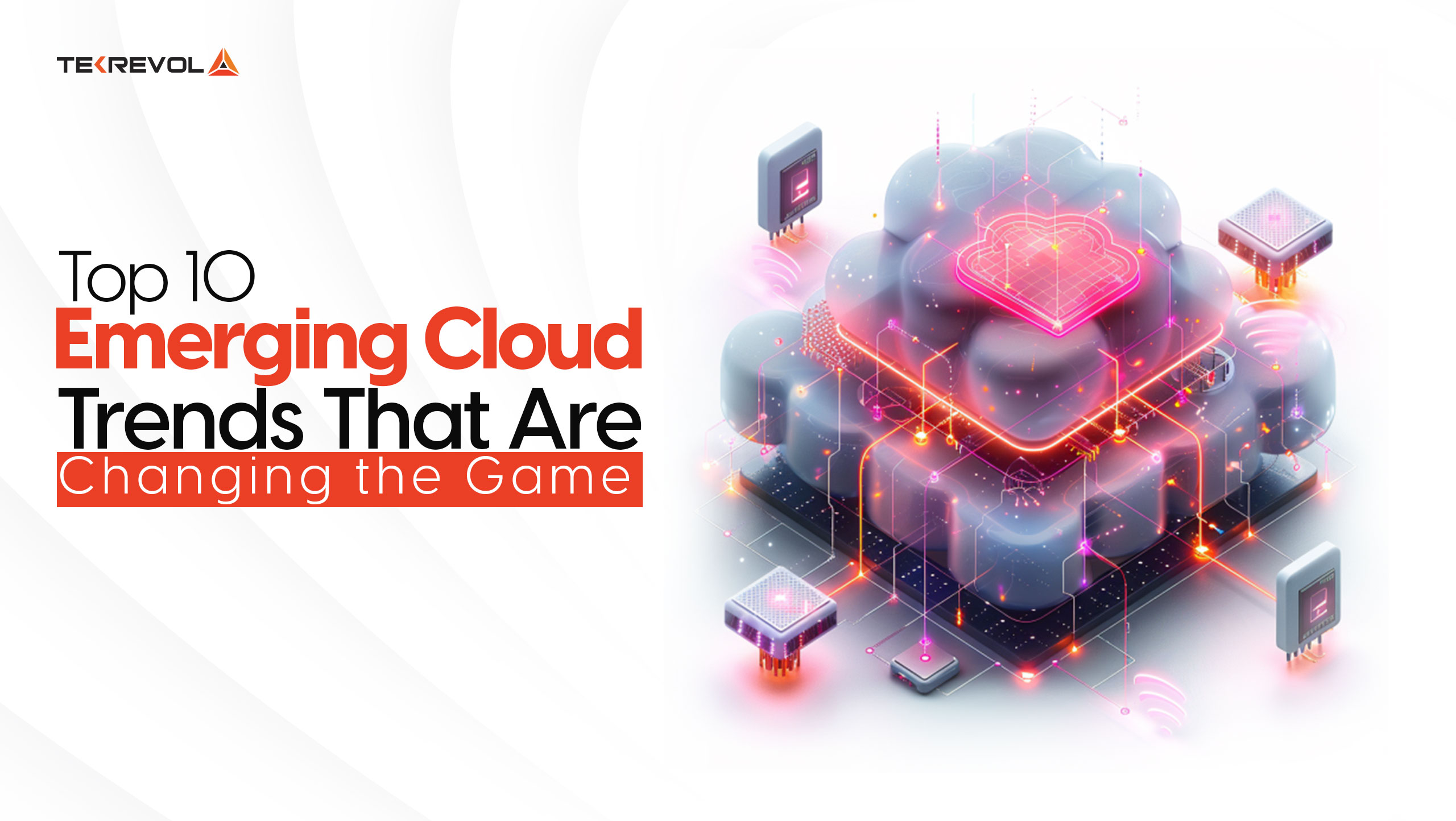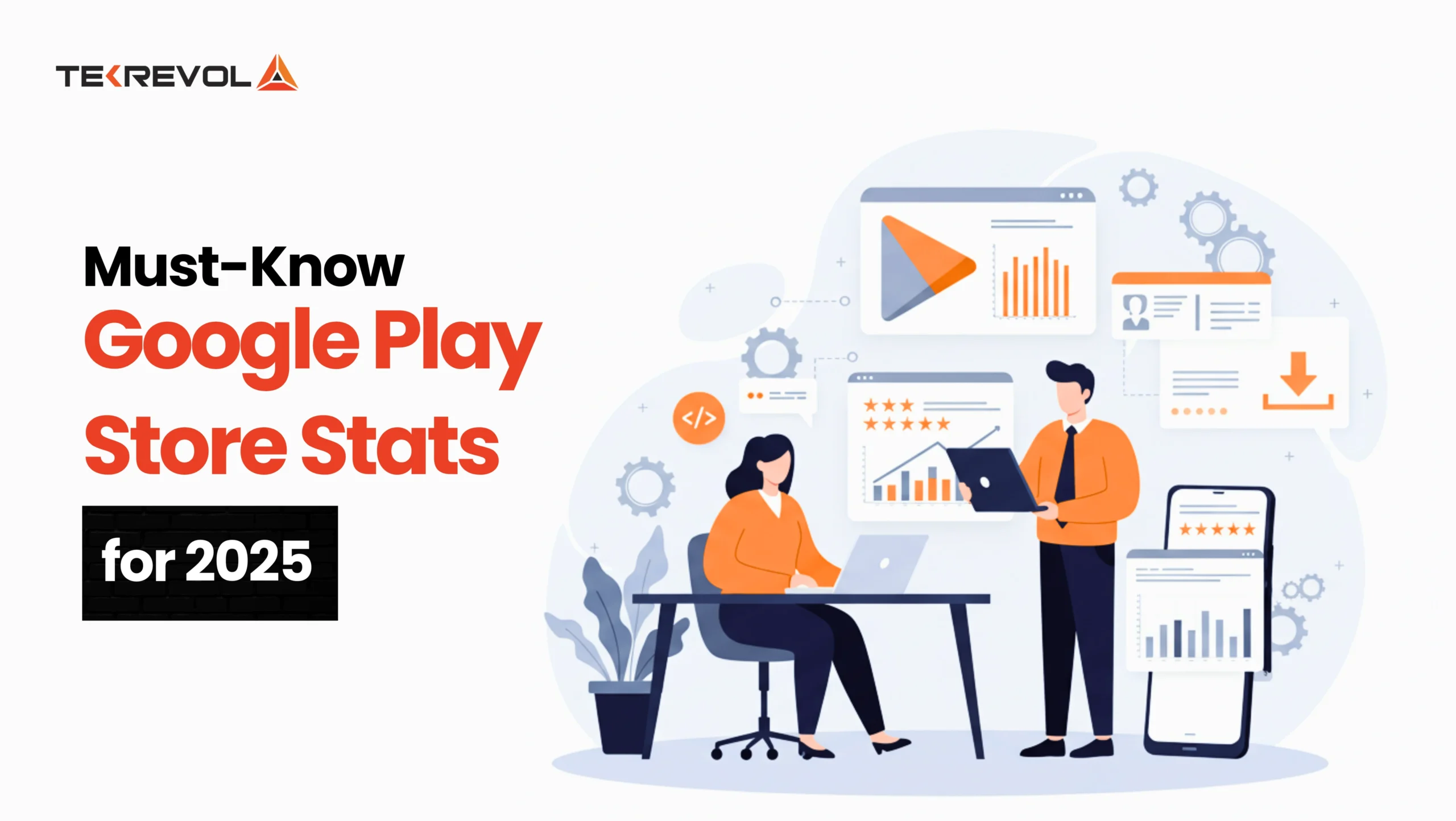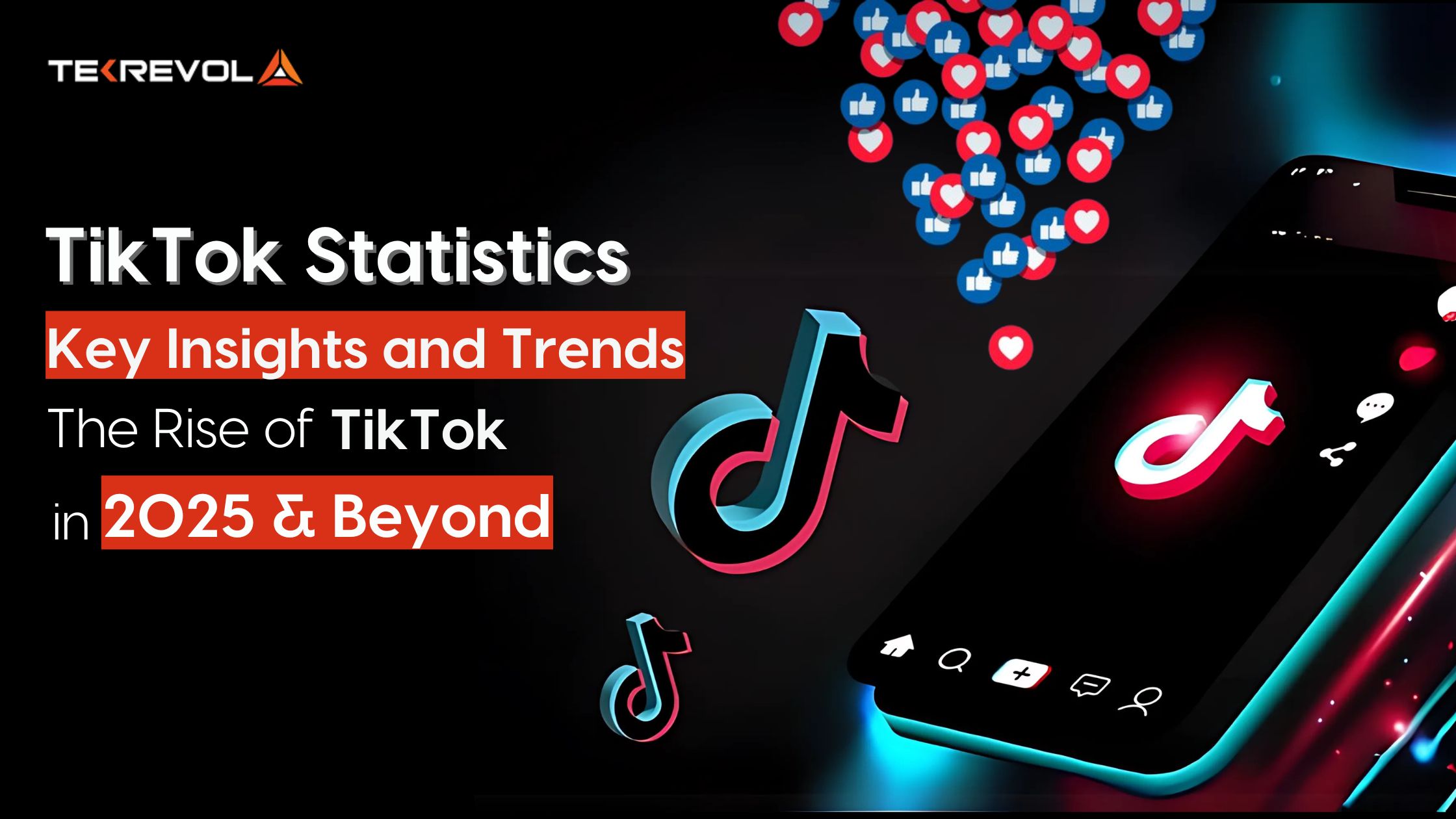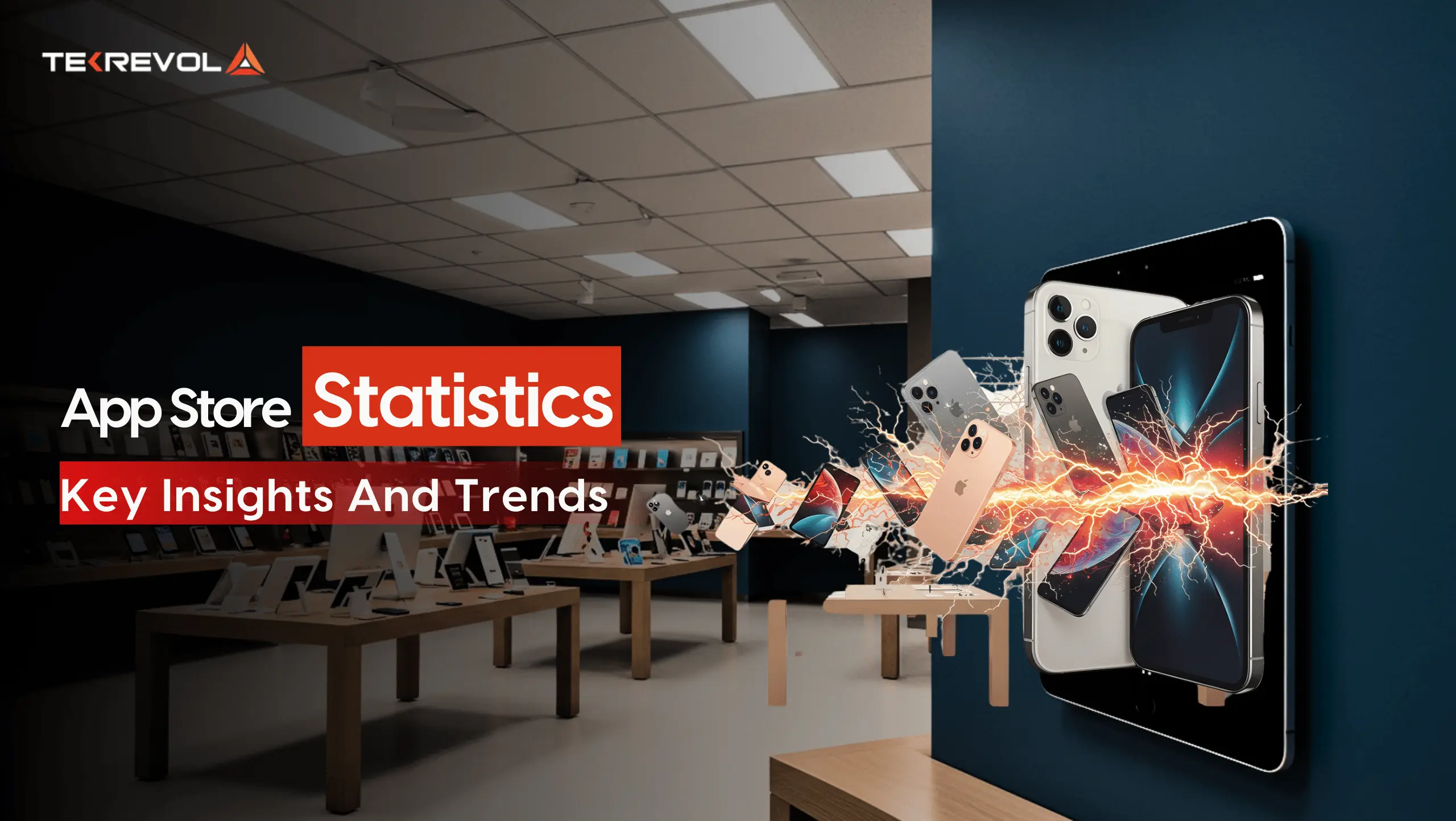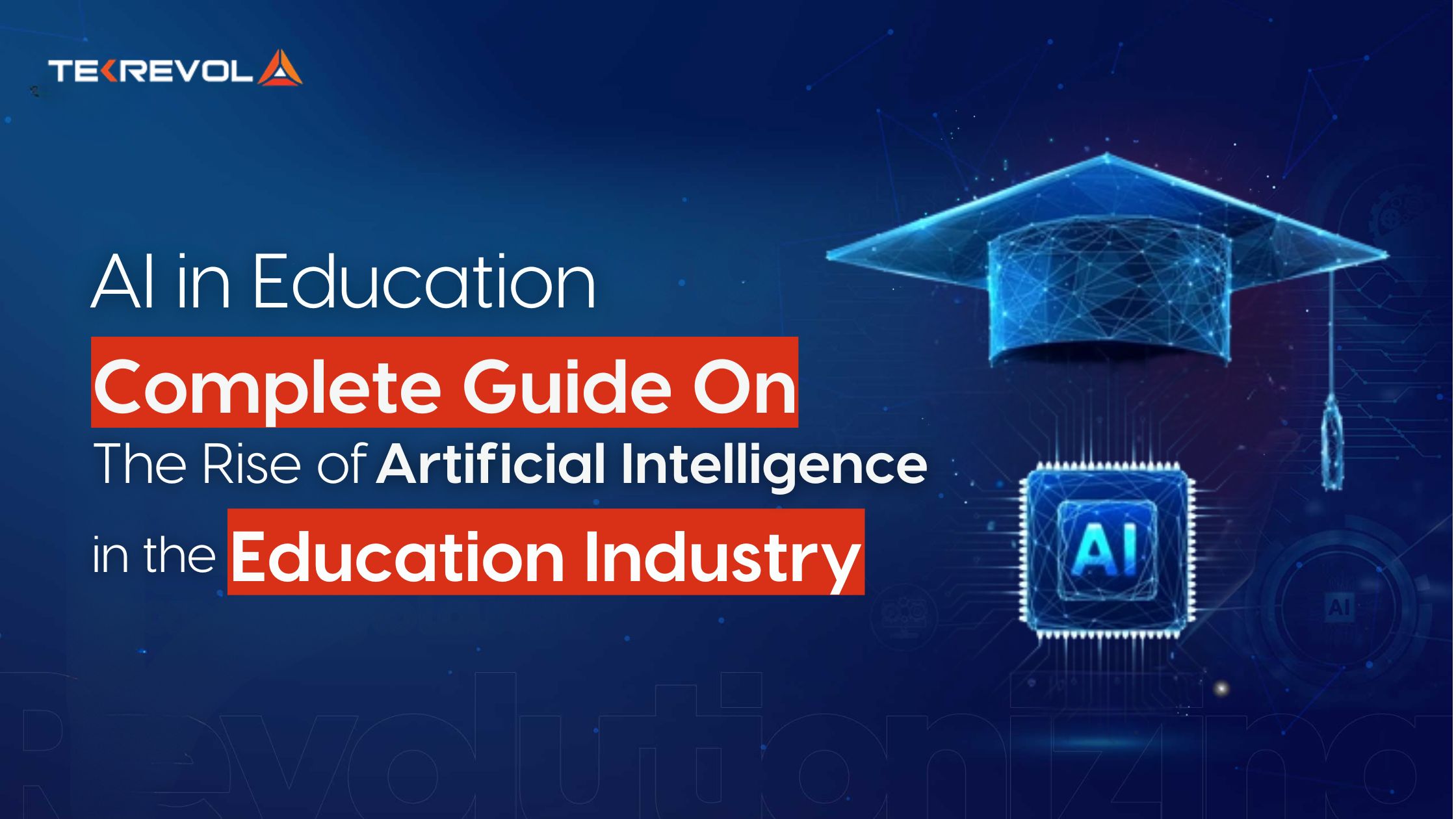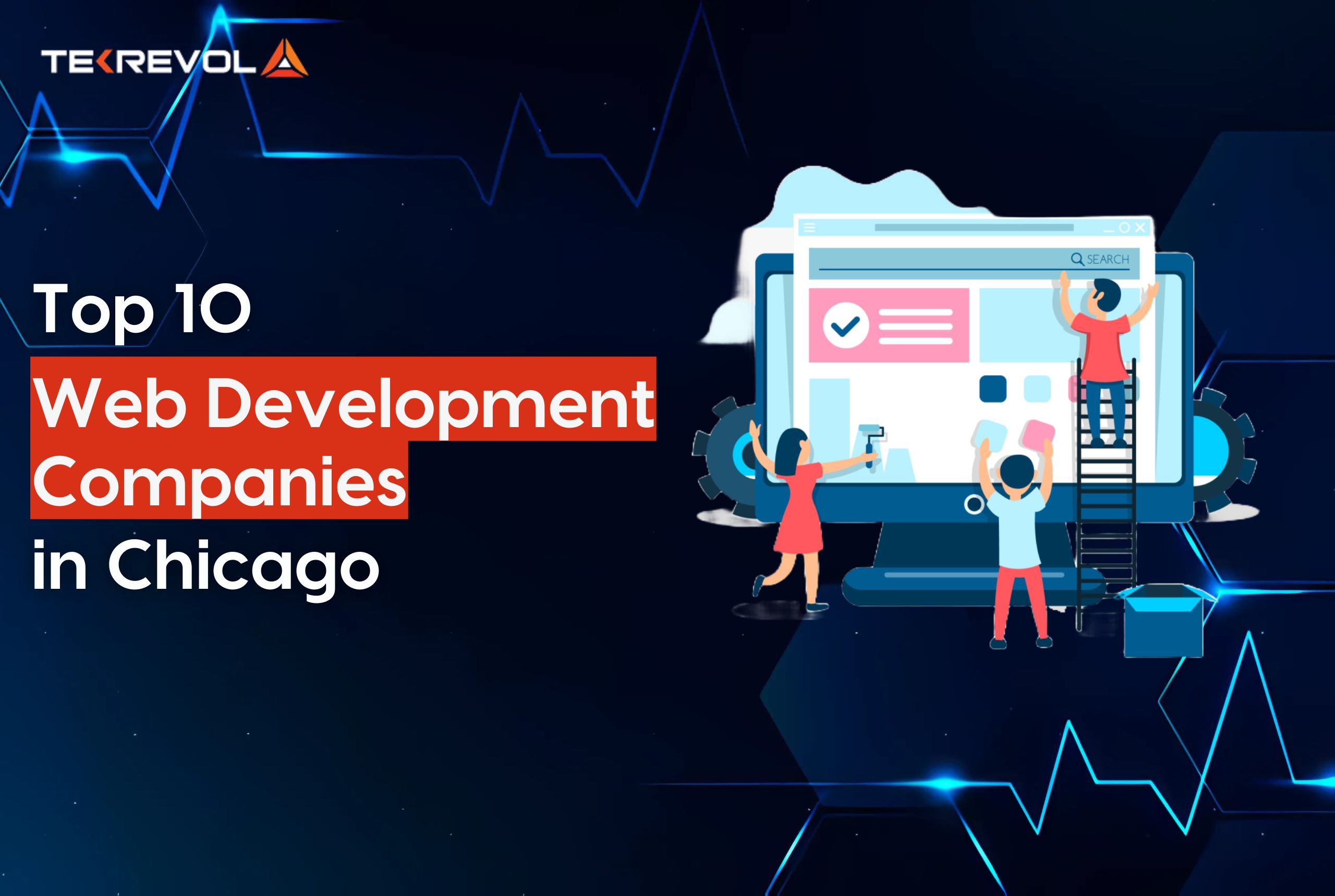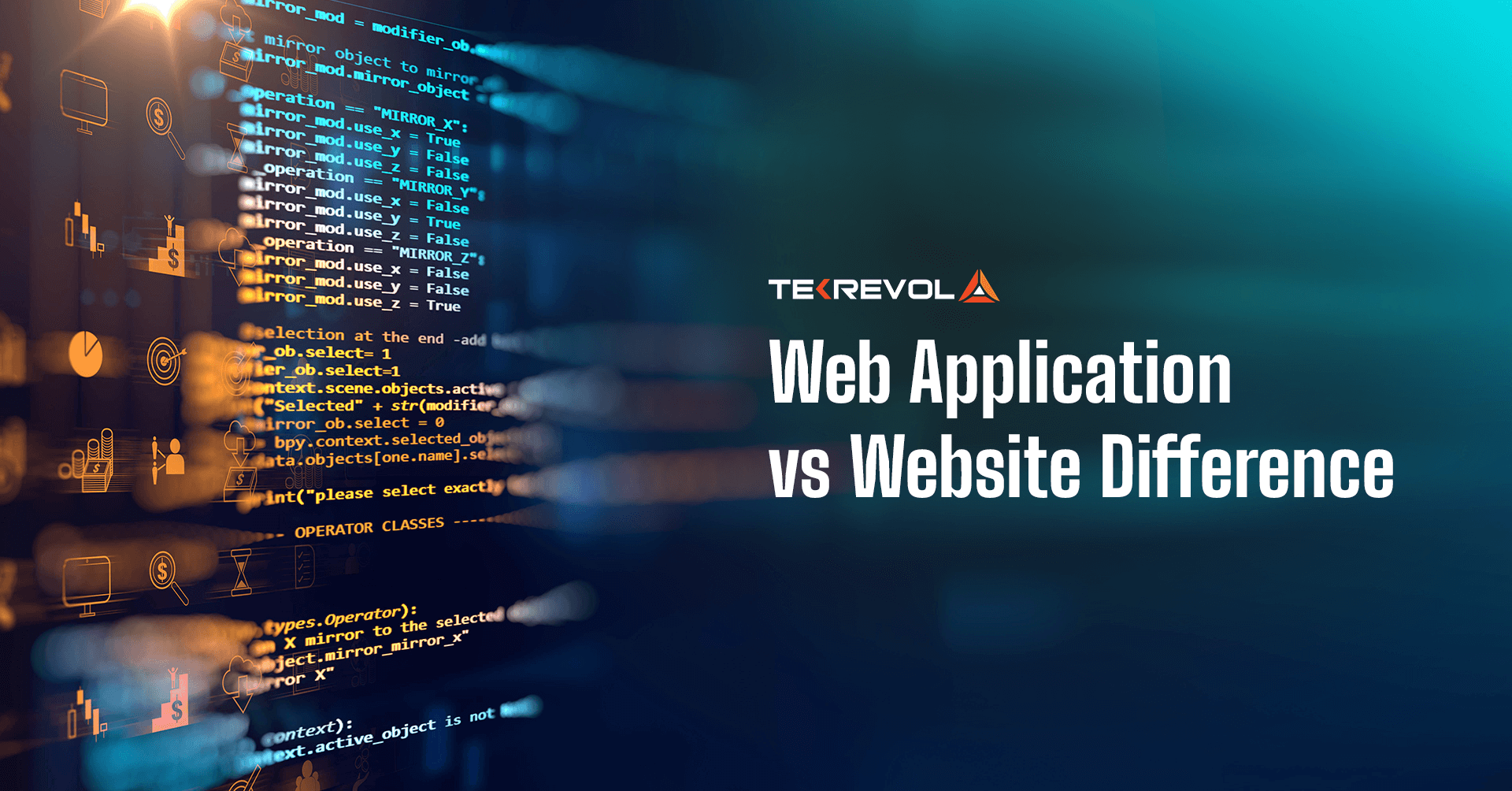Every time you think you have the whole technology scene figured out, something new pops up in the blink of an eye.
This is especially true when we talk about emerging cloud technologies. Cloud computing has evolved from a simple storage solution to a backbone of business strategy over time.
Industry statistics show that the spending of businesses on cloud services and infrastructure is going to cross $1 trillion for the first time in 2024, which highlights how important it has become for businesses to adapt to these changes and make use of them to stay ahead.
If you’re a business leader, tech enthusiast, or curious mind like me who wants to keep abreast of the latest technology in cloud computing, this blog is for you.
We’ll explore a comprehensive cloud computing technologies list, dissecting the innovations that drive cloud computing and anticipate what’s next in the world of cloud.
Let’s get started!
Challenges in Adopting Emerging Cloud Technologies
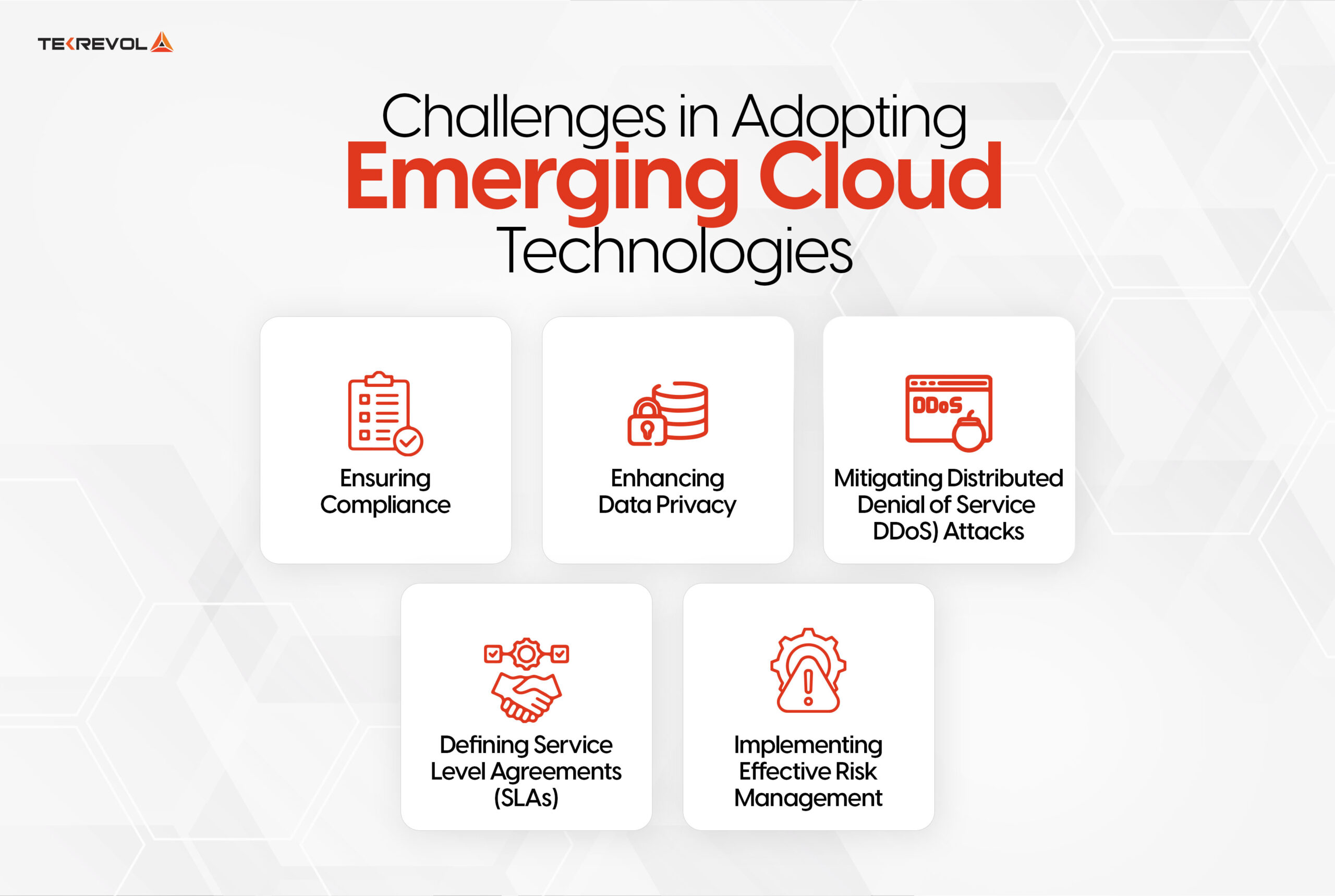
Before diving headfirst into the cloud computing technologies list, let’s take a moment to learn about the challenges of adopting emerging cloud technologies. It is an important prerequisite to successful cloud migration.
Why? Because, nearly 28% of investments in clouds are wasted owing to bad planning and even worse execution, according to a report by Flexera. That underlines an important necessity for businesses approaching cloud adoption strategically.
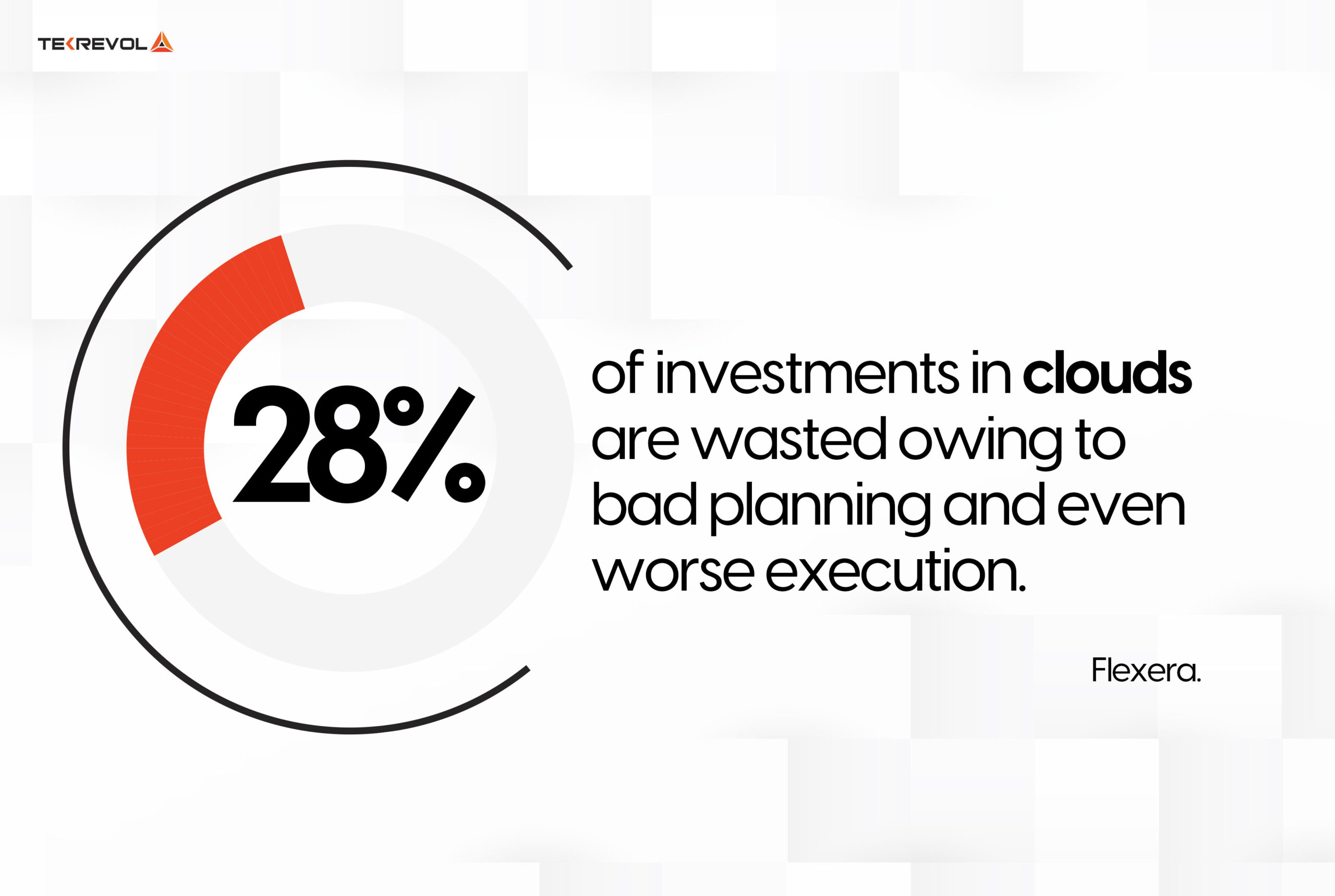
If you are a stakeholder who cares about your cloud strategy and desire to avoid pitfalls that can paralyze decision-makers and executives, here are five key cloud challenges you need to consider:
1. Ensuring Compliance
Regulatory compliance becomes a significant point of complication for cloud adoption. There are laws and regulations governing how data has to be kept and managed. The most common of these is GDPR or HIPAA. Failure to address such complications will lead to great delays in the deployment process.
Businesses should ensure that cloud providers abide by such compliances so as not to face fines or reputational damages.
2. Enhancing Data Privacy
Data privacy is one of the major issues in cloud environments. Since data travels over public and private clouds, there is a possibility for breach. The more it moves, the greater is the possibility of unauthenticated access and data leakage. Thus, organizations are then constrained to break their data privacy protocols.
Strong encryption, access control, and auditing processes must ensure that the sensitive information does not face the threat.
3. Mitigating Distributed Denial of Service (DDoS) Attacks
DDoS attacks represent one of the most serious threats to cloud technologies. Such types of attacks make services unavailable to the users through flooding. The detection and subsequent mitigation of such attacks are highly complex.
Organizations must invest in scalable monitoring systems along with DDoS protection services. This would protect their cloud infrastructure against malicious attempts.
4. Defining Service Level Agreements (SLAs)
Clear SLAs are the key to the adoption of cloud services. In case there is no clear SLA setup, then it poses a business risk of losing control over its data or service quality. Vagueness of SLA might cause confusion between service availability, performance, and support response times.
Pro Tip: Regular reviews of SLAs and third-party audits help ensure compliance with agreed-upon standards.
5. Implementing Effective Risk Management
Managing risks in cloud environments is important to guard organizational assets. Companies must formulate integrated risk management strategies that are regularly reviewed, have incident response plans, and use advanced security features.
Organizations can protect intellectual property and maintain a secure cloud infrastructure by identifying vulnerabilities early and putting strong security measures in place.
- Don’t Let Cloud Challenges Hold You Back!
- Our expert cloud consultation services help you navigate complexities and maximize the benefits of emerging cloud trends.
10 Emerging Cloud Trends and Technologies

Here are the top 10 emerging cloud technologies and trends that are prone to transform the future of cloud applications and transformation in the years to come.
1. Artificial Intelligence and Machine Learning
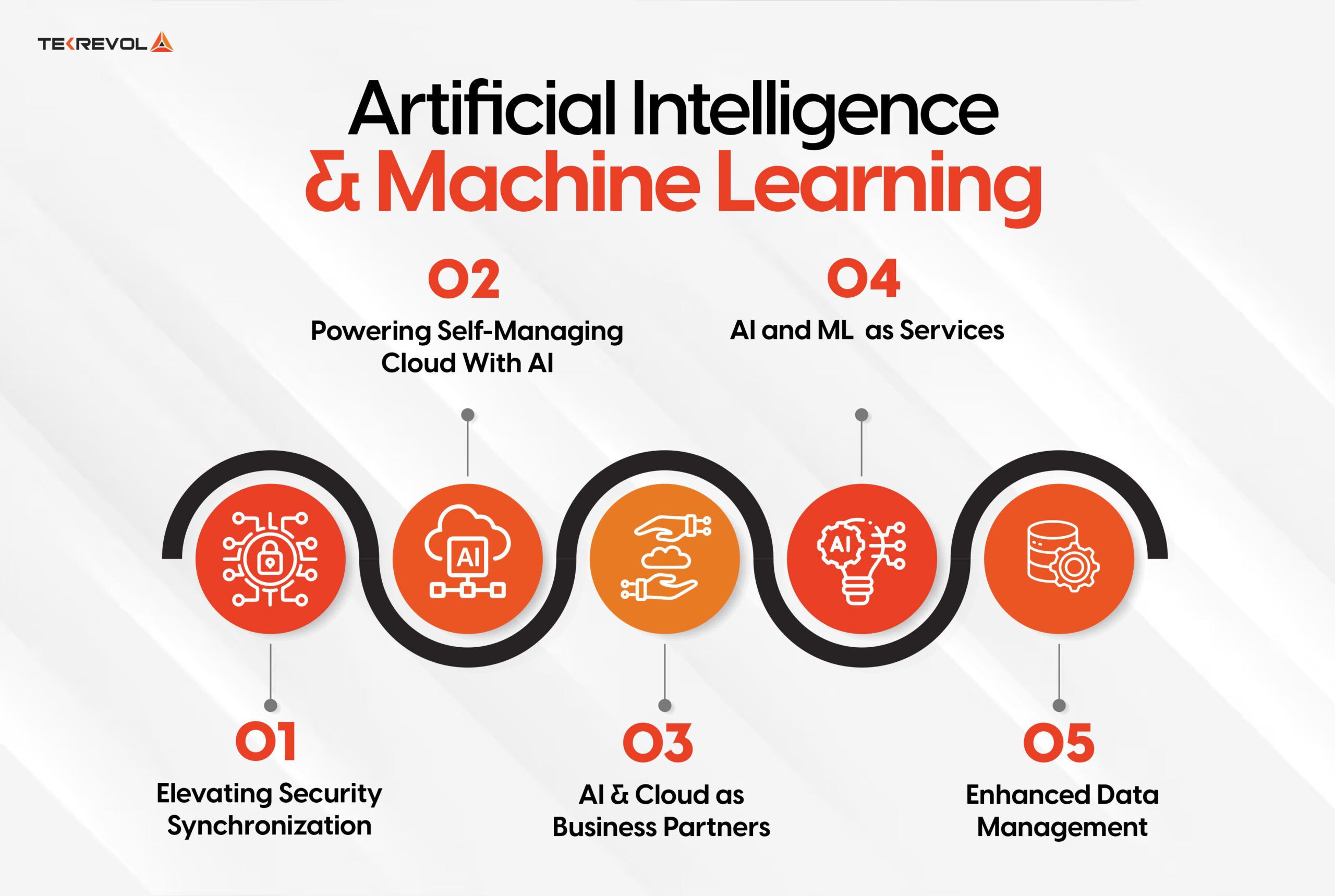
Artificial Intelligence (AI) and Machine Learning (ML) are rapidly becoming integral components of cloud computing. AI-driven cloud management utilizes predictive analytics to optimize resource allocation and predict system failures, leading to enormous cuts in operational costs.
A recent report suggests that by 2030, the global AI market will have a Compound Annual Growth Rate (CAGR) of 28.45% and grow to above $826 billion. This growth indicates the growing reliance of cloud environments on AI-driven solutions.
AI-as-a-Service allows any size business access to incredibly powerful AI capabilities with minimal need for infrastructure. This means that companies can implement advanced analytics, natural language processing, and machine learning models without significant upfront costs.
How AI Will Transform the Future of Cloud Services
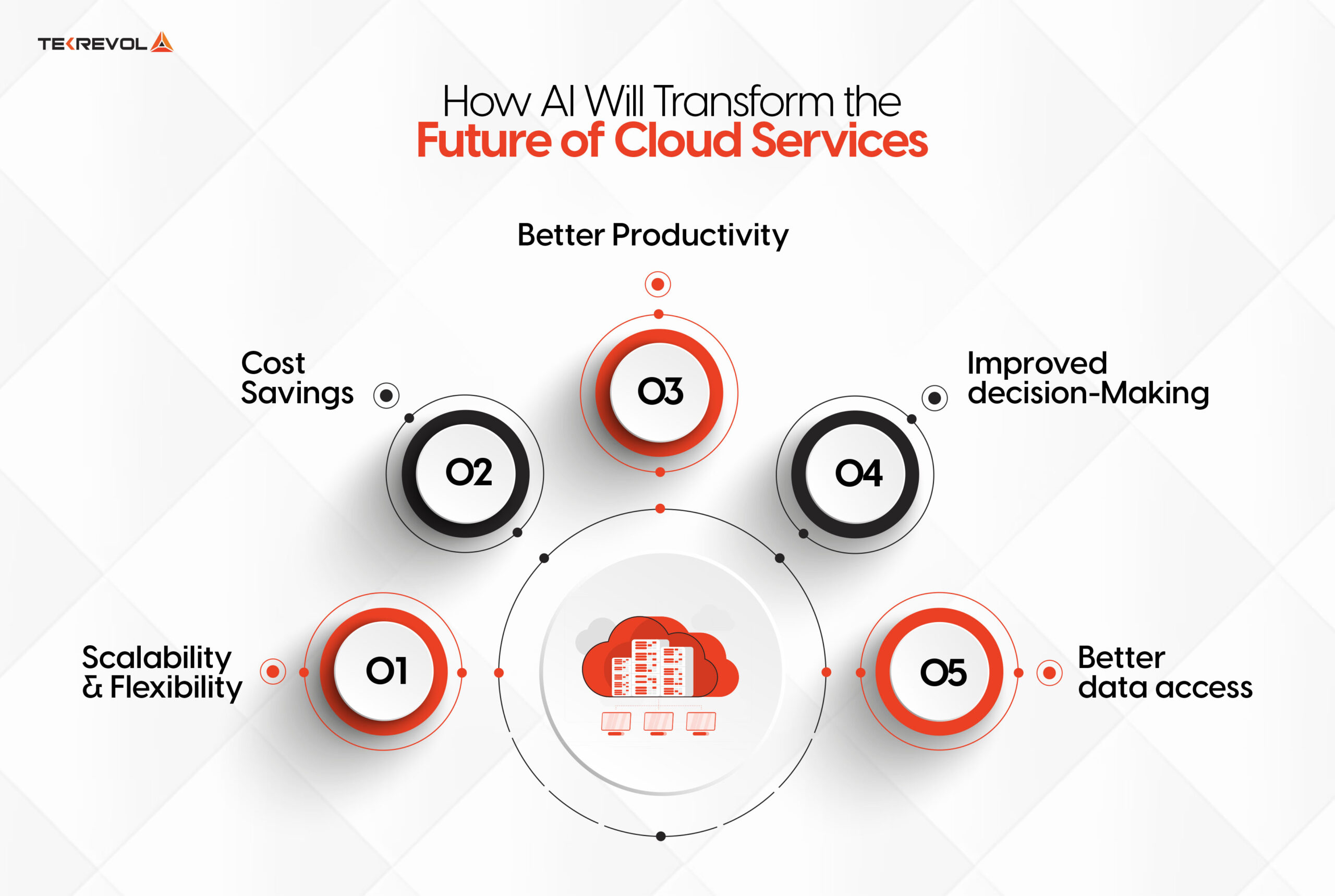
Moving ahead, AI is going to revolutionize cloud services with process automation, improved service delivery, and personalized experiences. The cloud providers embracing AI technologies will directly make their products even more efficient and responsive to customer needs.
Real-World Applications
- Netflix: Using AI algorithm to analyze viewer preferences and use them for effective content recommendations to users.
- Salesforce: It uses its Einstein platform to integrate AI into cloud services, automating workflows and predicting customer behaviors.
- Amazon Web Services (AWS): It offers services like Amazon SageMaker, through which organizations can develop and deploy models in the most efficient machine learning ways.
2. Serverless Computing
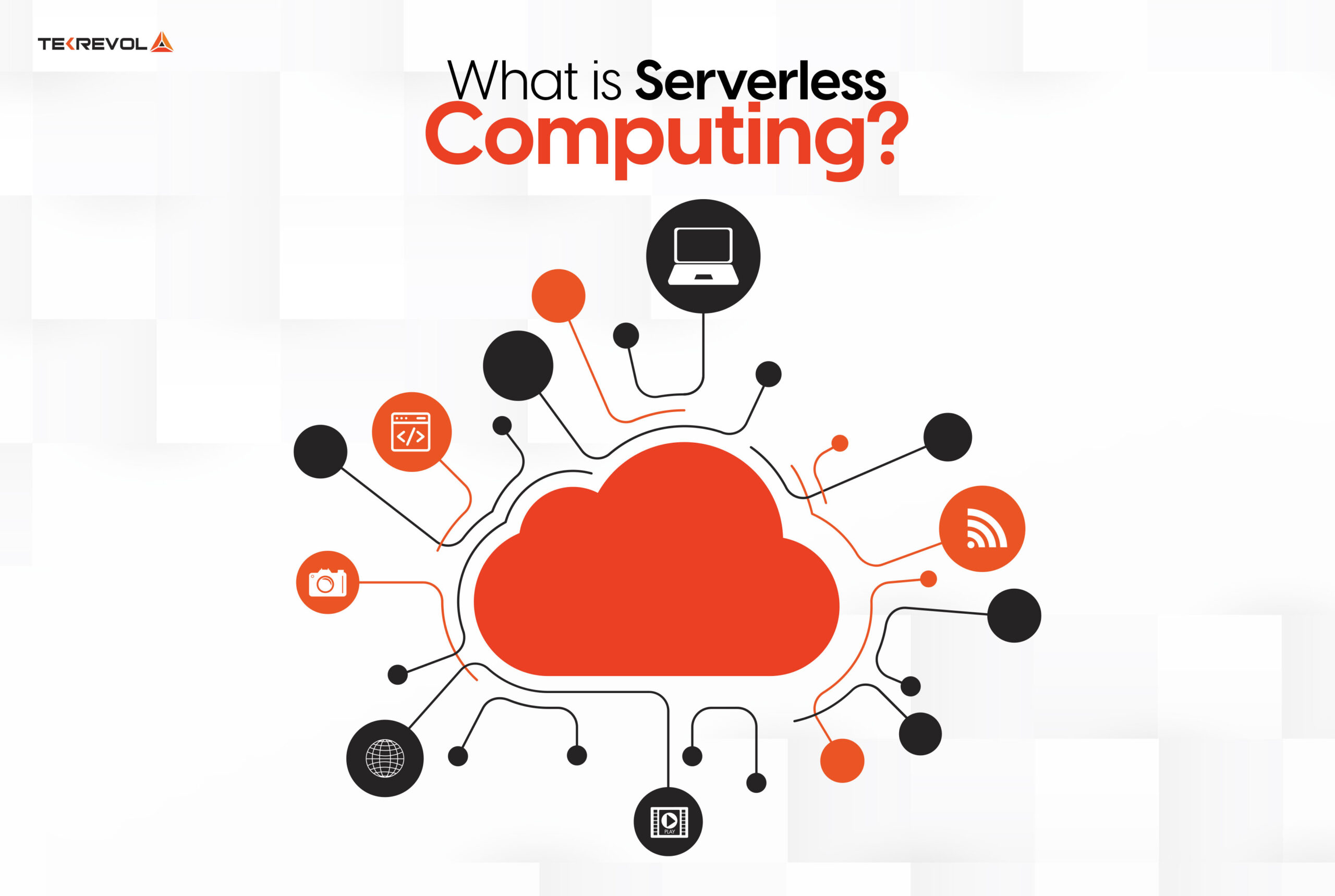
Serverless computing is one of the emerging trends in cloud technology where the application creators would design and execute cloud applications without having to worry about the infrastructure that would make up the servers. This model has many advantages, such as pay-per-use pricing and automatically scaling as demand arises.
With more organizations using cloud-based technology, the market for serverless computing will see a CAGR of 23.17% between 2023 and 2028. This suggests a high significance of this sector in the technological landscape.
Serverless computing eliminates infrastructure management from developers’ lives so they can write codes rather than take care of server maintenance. This, in itself, accelerates development cycles, making it a business-critical decision to innovate in operations, making it even more compelling for business innovators.
What It Means for Businesses
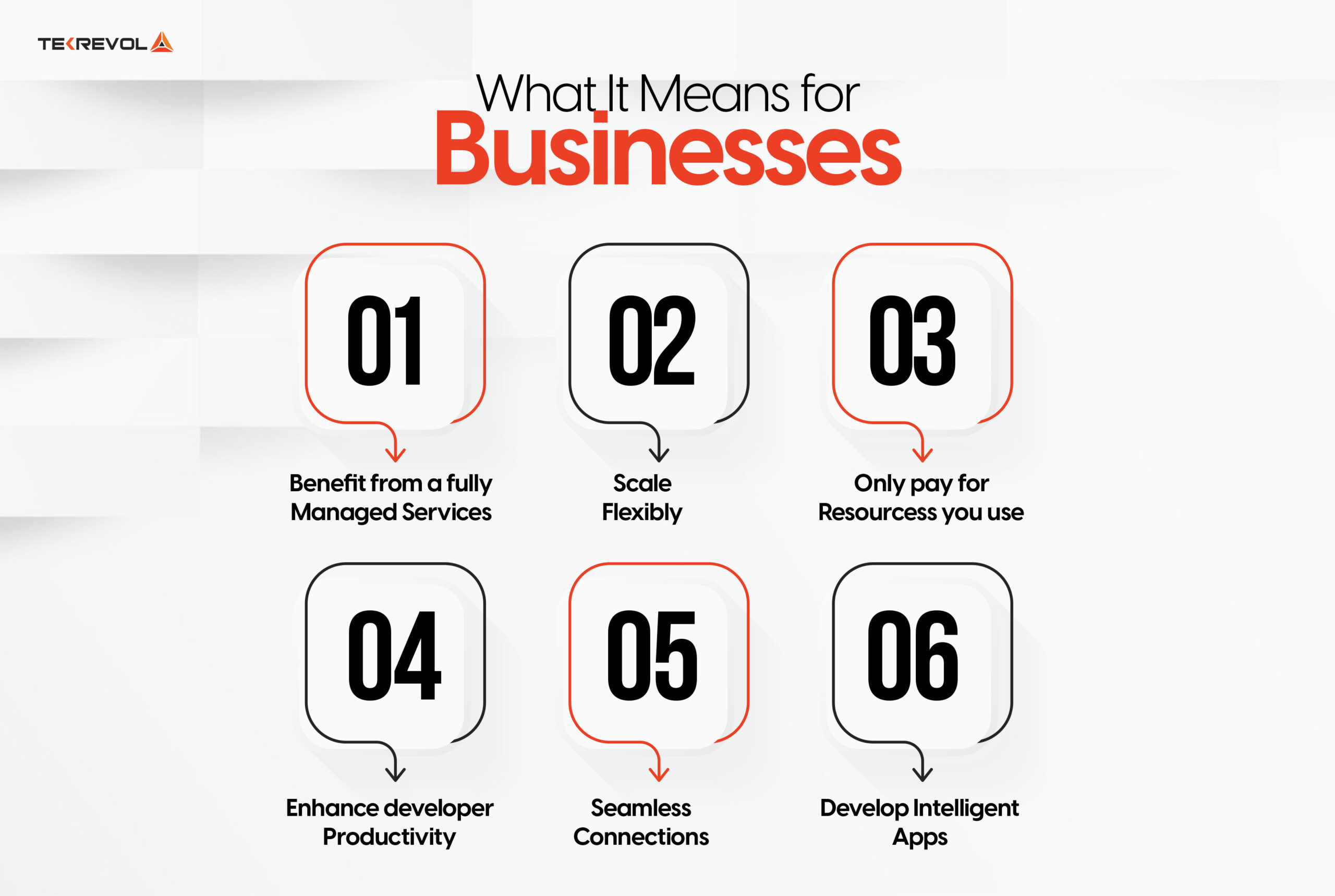
Serverless architecture helps in huge cost savings for businesses to pay only for the consumed resources and thus enables companies to scale their applications without any extra cost towards the unnecessary expense of that application.
Real-Life Use Cases
- Coca-Cola has used serverless computing for analytics on its data, bringing efficiency in its operations, thereby reducing costs.
- Zalando, a fashion retailer company, has used serverless architecture to streamline the deployment of an application, which has helped it deliver to the market much more quickly.
- Airbnb leverages serverless functions for dynamic pricing and user notifications, streamlining operations and reducing overhead.
3.Multi-Cloud and Hybrid Cloud Strategies
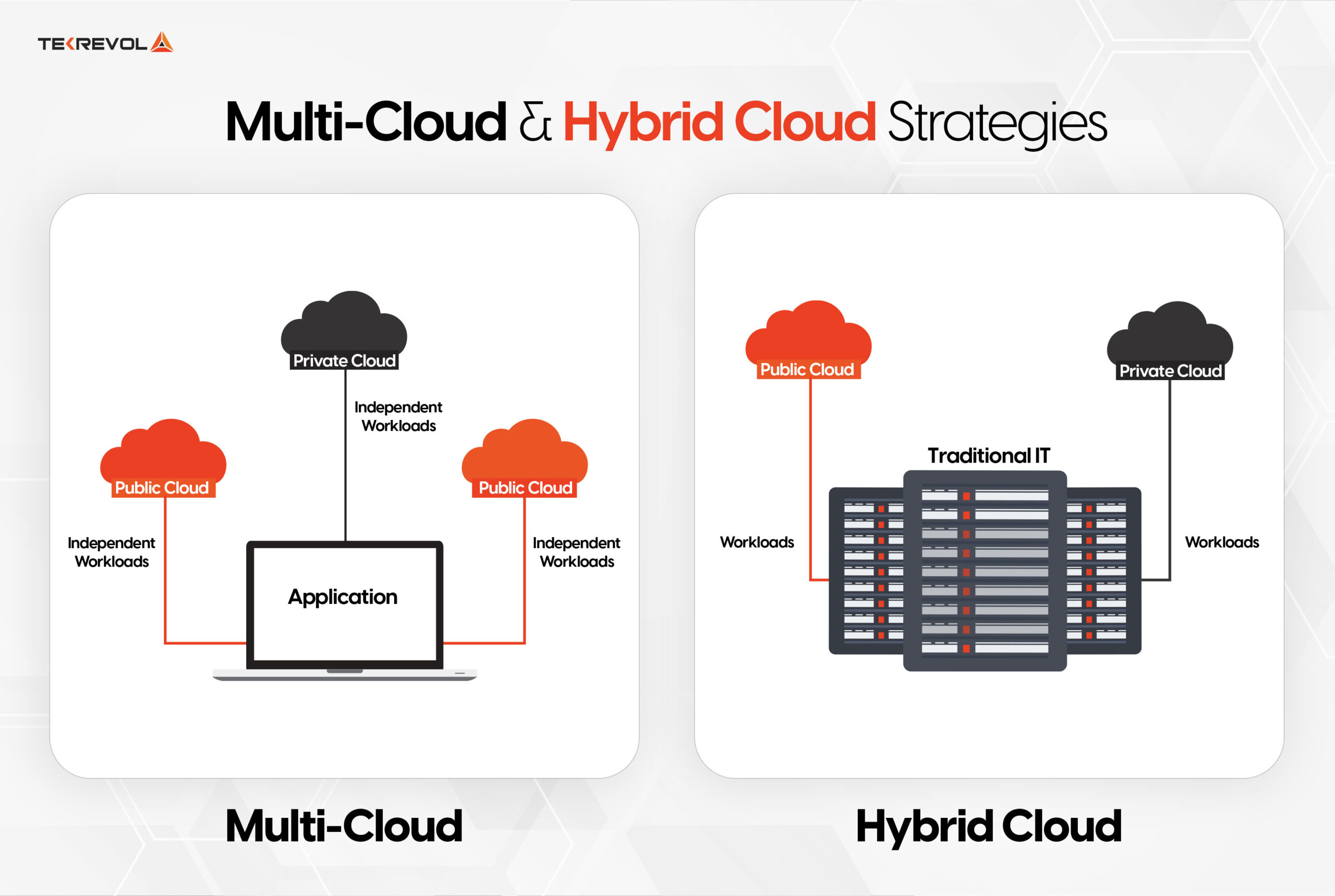
Multi-cloud and hybrid cloud strategies are gaining popularity these days, as enterprises aim for flexibility and resilience. Using multiple cloud providers prevents vendor lock-in and aligns workloads with certain strengths of each platform, thus making it not only operationally efficient but also risk-reducing because of its dependency on a single provider.
The hybrid cloud model permits businesses to combine both the public and private cloud environments, offering a balance between security and scalability. In this integration, the businesses can utilize the existing infrastructure while acquiring the advantages of advanced cloud services.
How These Strategies Transform Businesses
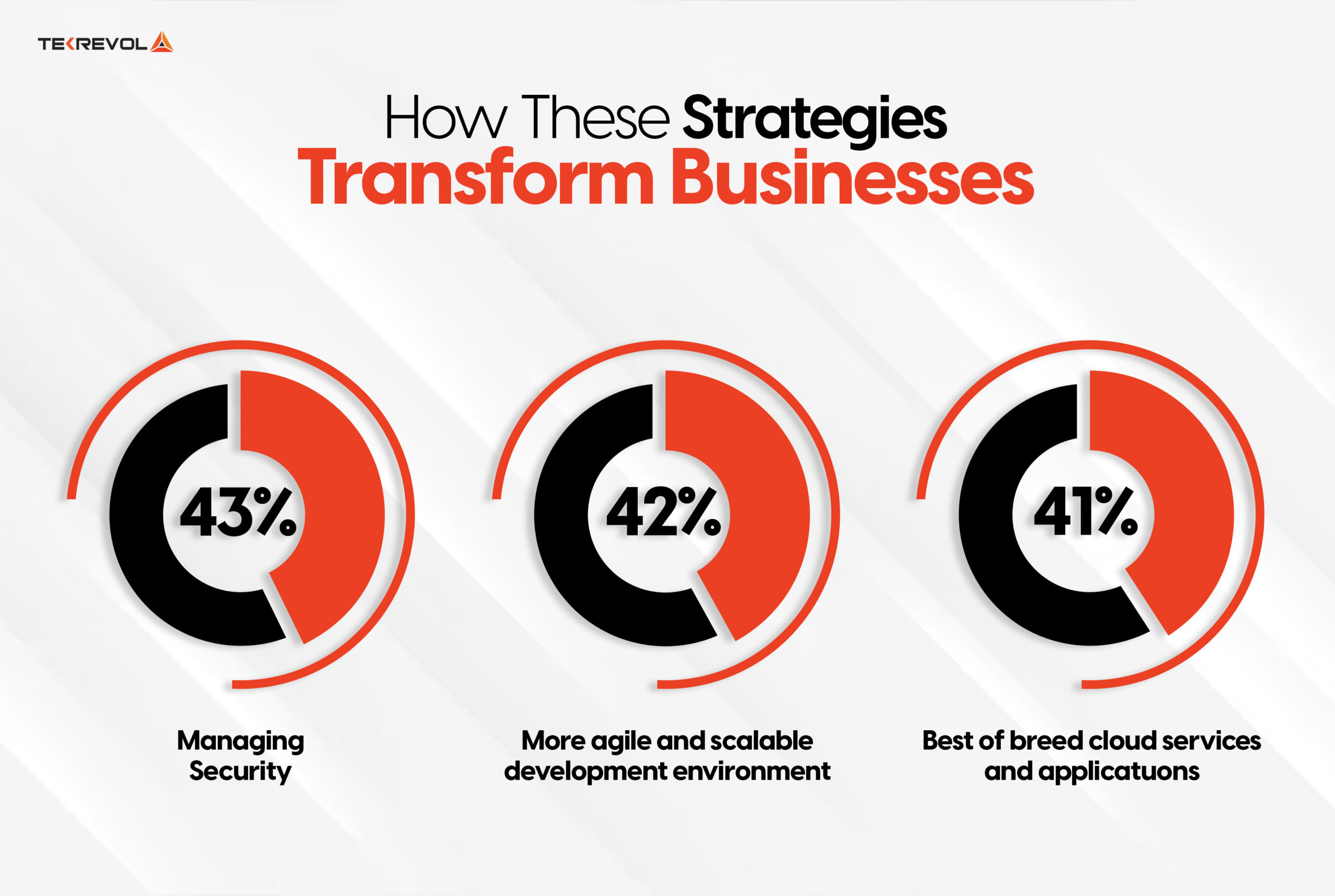
Implementing multi-cloud strategies gives an organization more flexibility in allocating its resources and managing risks. The firm is able to tailor its infrastructure to the specific needs of its workloads while being resilient to disruptions.
Real-Life Use Cases
- General Electric, for example, uses a hybrid cloud strategy to maintain sensitive data securely while taking advantage of public clouds for scale.
- Spotify uses a multi-cloud strategy that combines Google Cloud with AWS to improve service reliability and performance.
- BMW integrates a multiplicity of cloud services into its connected car applications, ensuring optimal performance across diverse environments.
- Ready to Maximize Your Cloud Investment?
- Our expert consultants will help you strategically manage resources and optimize costs for better ROI!
4.Edge Computing
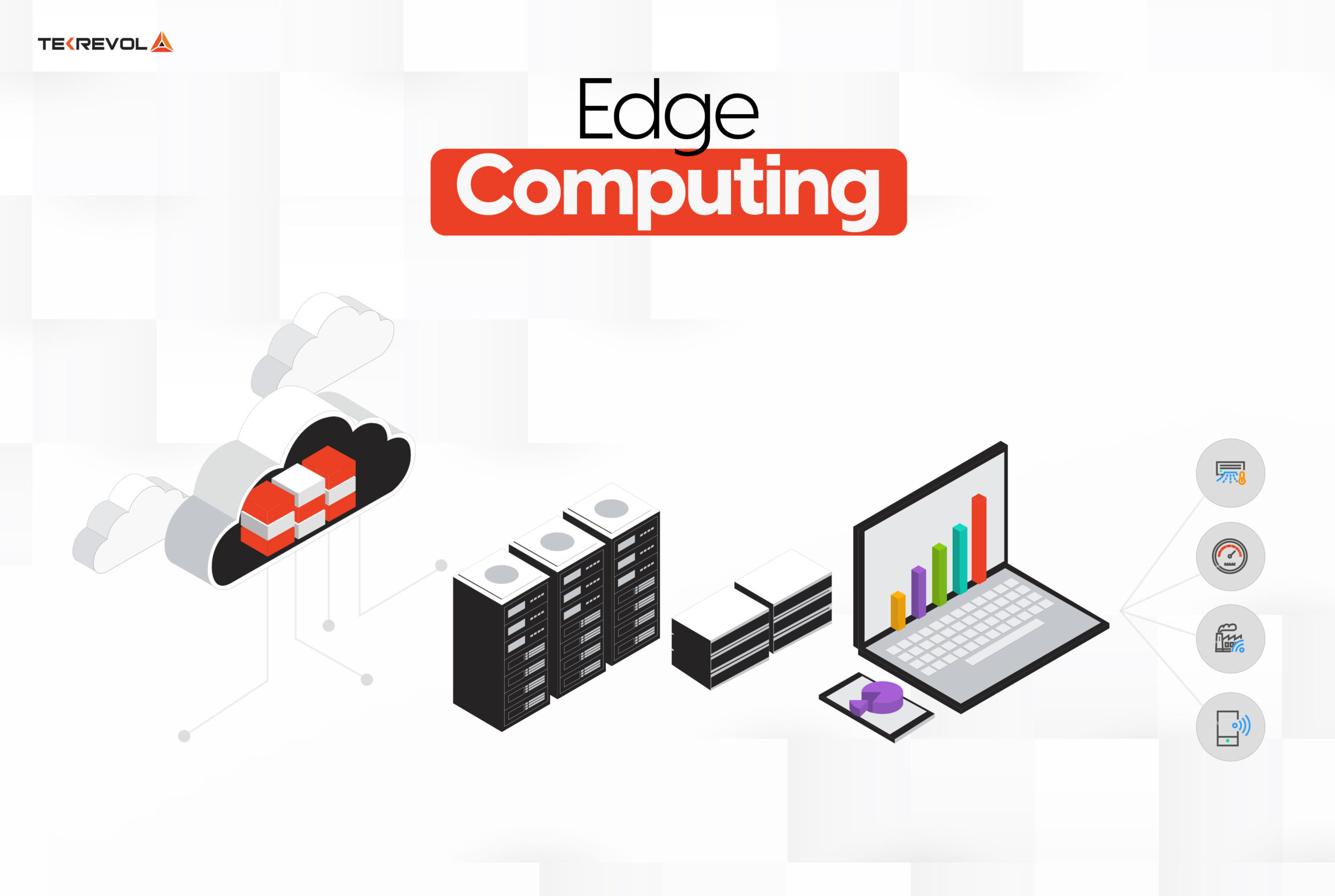
Edge computing is rapidly emerging as a transformative force in cloud technology and processes data closer to where it is generated, reducing latency and improving response times for applications.
The global edge computing market will grow from $19.66 billion in 2024 to an astonishing $181.96 billion by 2032, with a CAGR of 38.2% during this period. This growth reflects the increasing demand for real-time data processing across industries.
With cloud infrastructure technologies, businesses can leverage the power of IoT devices and process data more efficiently through edge computing. This trend not only improves operational efficiency but also supports innovative applications that require immediate data analysis, such as autonomous vehicles and smart cities.
What It Matters for Businesses
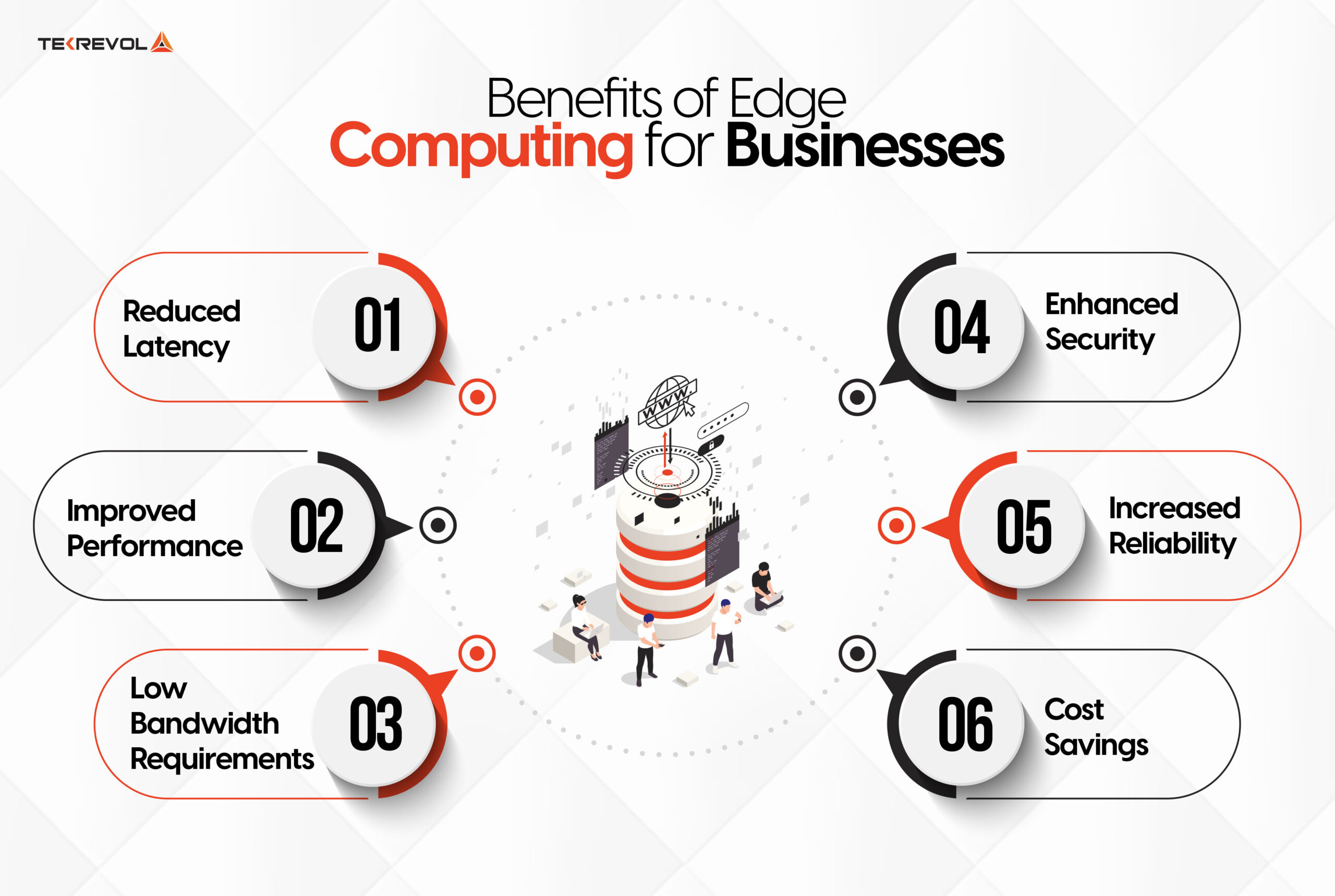
Businesses benefit from edge computing in processing data in real-time for faster decision-making and improved experience delivery to customers. Businesses can enhance their service delivery and stay responsive to market changes because latency is reduced.
Real-Life Case Studies
- AWS promotes an edge computing solution for companies such as Netflix to deliver content with minimal latency.
- GE Aviation employs edge computing to analyze in real time the performance data of its engines, thus optimizing schedules for maintenance and operational efficiency.
- Verizon uses edge computing to support its 5G network, which allows connected devices to process data faster.
5. Containers and Kubernetes
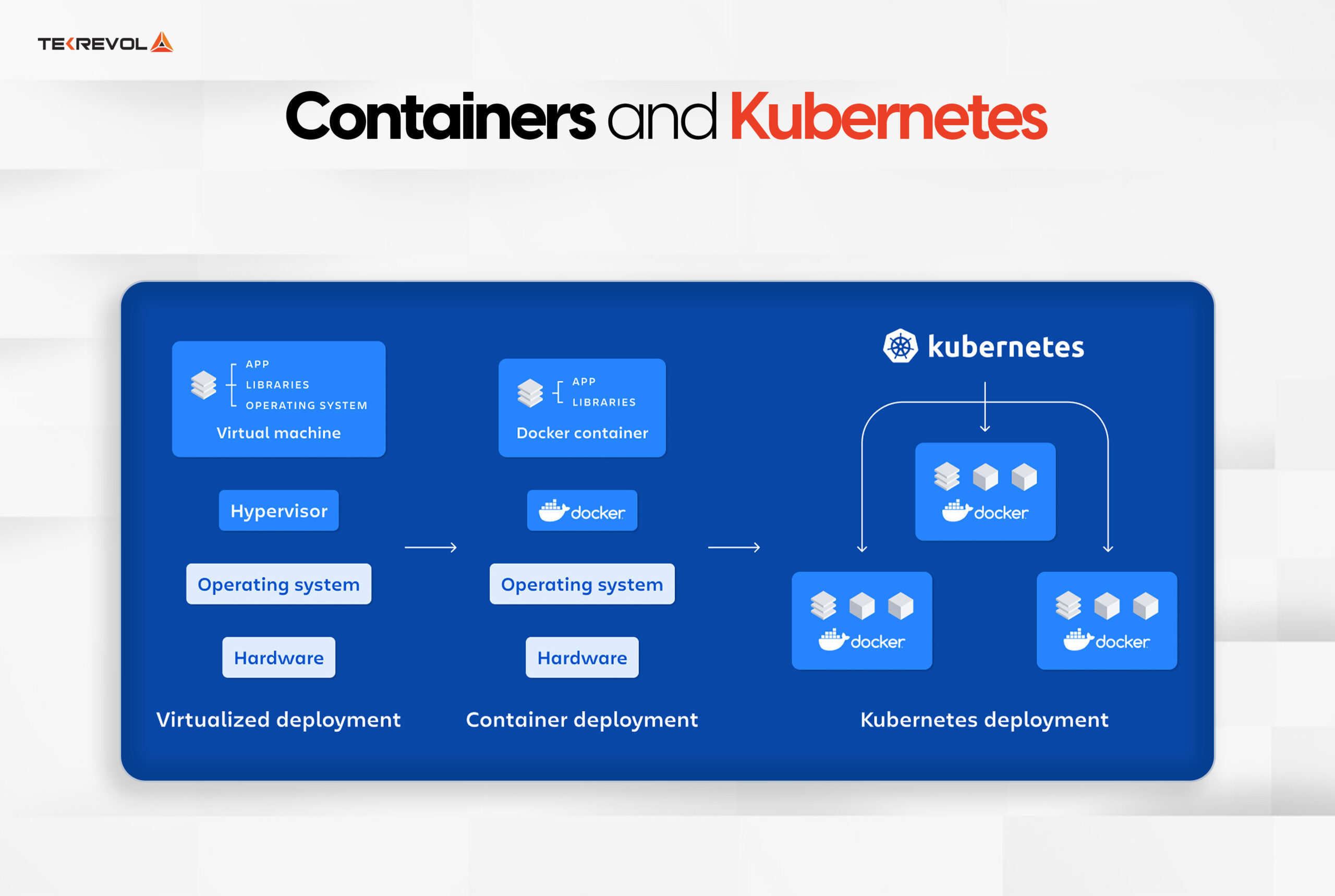
Containers and Kubernetes have taken application development and deployment to another level. These containers manage software environments with scalability and efficiency by encapsulating applications and their dependencies, thus being consistent in any computing environment.
Through container adoption, organizations benefit from faster deployment times, improved resource utilization, and enhanced scalability. This is further simplified through Kubernetes where automated scaling, self-healing, and load balancing play a significant role in application performance in dynamic environments.
How Containerization Will Change Business
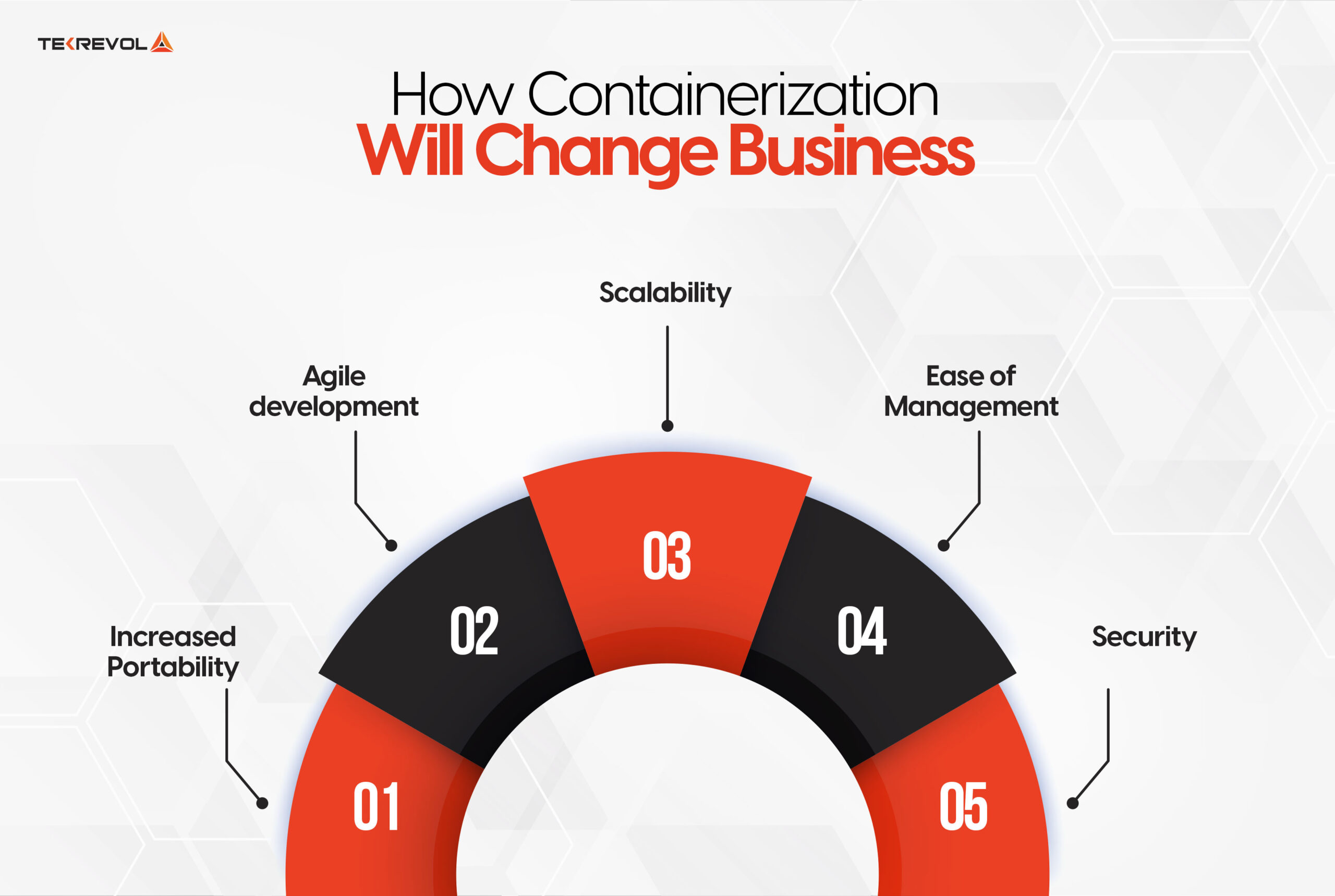
With containerization, applications become deployable faster and with fewer failures. This allows a business to respond more rapidly to fluctuating market conditions and also enables the optimization of resource utilization.
Real-Life Use Cases
- Spotify uses Kubernetes to manage its microservices architecture, ensuring efficient scaling during peak usage times.
- Airbnb uses container technology to optimize the process of deploying their applications, thereby making the whole system more reliable.
- The New York Times uses Docker containers in its web applications, which increases the speed of updates and results in better performance.
- Ready to Optimize Your Cloud Costs?
- TekRevol helps you implement strategies that reduce expenses while enhancing your cloud infrastructure’s performance.
6. Cloud Security Innovations
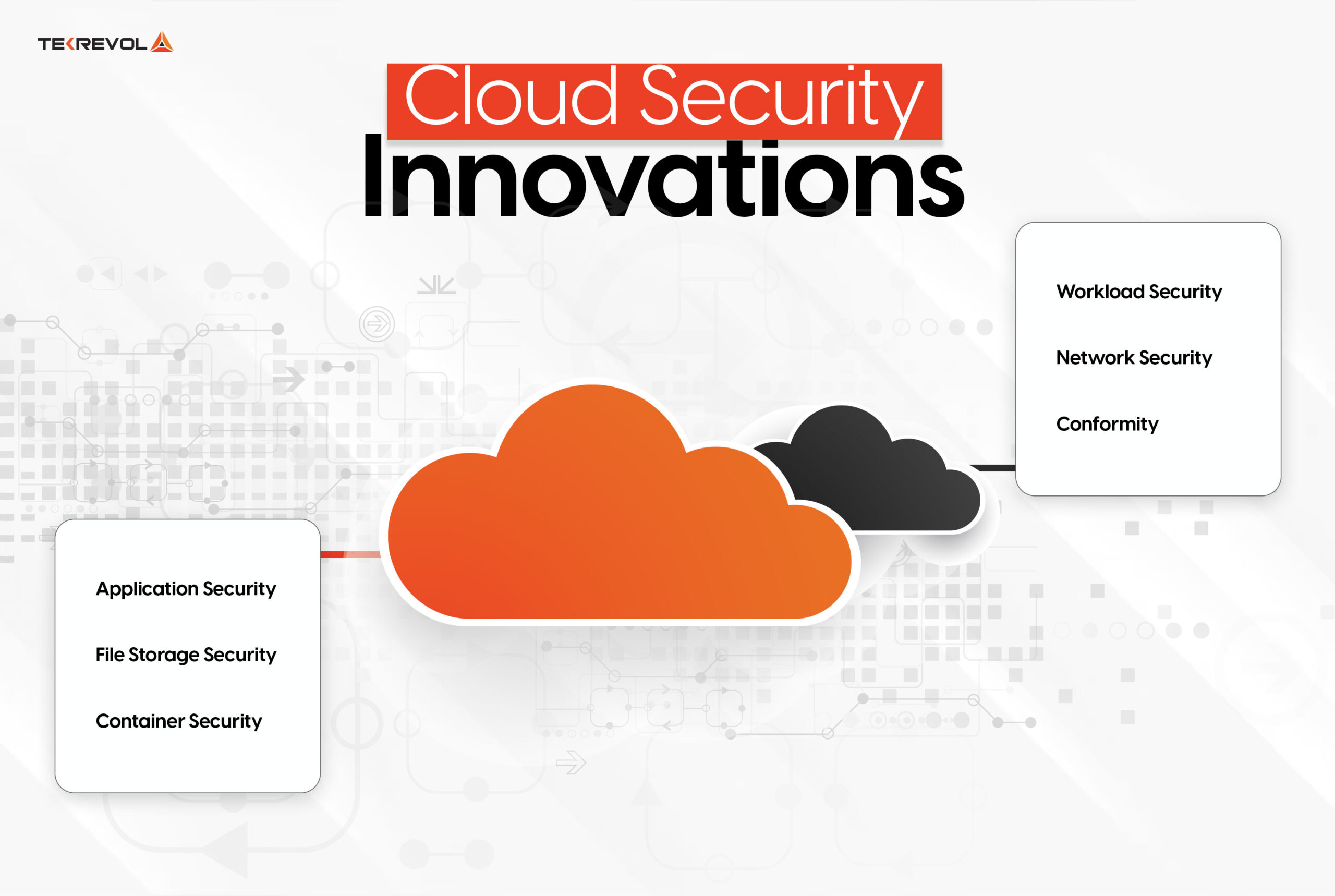
Cloud security innovations are necessary as more firms rely on cloud services to handle sensitive data. New security techniques, including zero trust architecture and AI-driven threat detection, are being employed to prevent any unauthorized access or breach of assets in the cloud. This is evident as a recent report indicates that cloud breaches experienced a 75% increase in 2023.
These new cloud technologies can significantly advance the security posture of the business. Besides protecting against these threats, the innovations also offer compliance with regulatory requirements to ensure any organization using the cloud infrastructure is on solid ground.
Why Security Innovations Matter for Businesses
New security measures can protect sensitive data in the cloud by employing advanced threat detection and response systems. These innovations help organizations mitigate risks associated with data breaches and ensure that customer information remains secure, ultimately preserving trust and compliance.
Real-Life Use Cases
CrowdStrike utilizes AI-powered security for real-time detection and response in cloud environments.
IBM Cloud adds advanced encryption and identity management solutions to the security capabilities to protect sensitive data for its clients.
Microsoft Azure uses a zero-trust framework to strengthen security across its cloud services, providing strong access controls.
7. Cloud-Native Development and DevOps
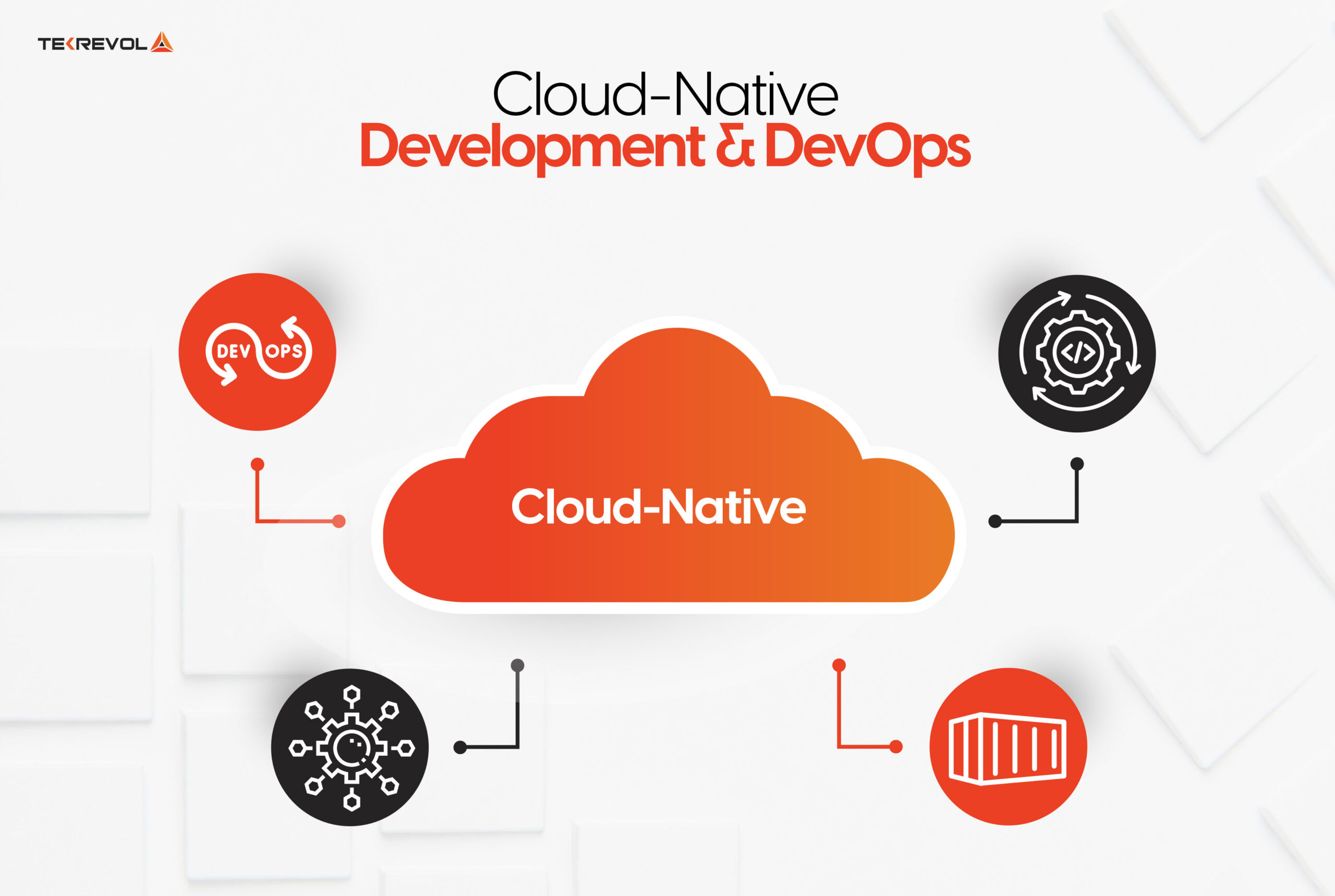
Cloud-native development and DevOps practices are reshaping the manner in which companies build and develop their applications.
Through their applications in microservices architecture and pipelines with continuous integration/continuous deployment, businesses can integrate multiple teams working together on developmental stages and accelerate the company’s developmental cycles.
As of recent studies, companies implementing DevOps achieve a 20% faster deployment and 50% lead time reduction in changes, which reflects the actual value achieved with such an approach in the cloud environment.
The Transformation Through DevOps Practices
DevOps practices foster collaboration, breaking the silos of the development and operations teams. Such integration brings quicker development cycles, better software quality, and optimal resource utilization towards innovation in an organization.
Real-Life Use Cases
- Etsy uses DevOps practices to deploy code updates multiple times a day, which enhances user experience through rapid improvements.
- Netflix uses a cloud-native approach with microservices architecture to deliver content seamlessly across devices.
- Target incorporates the DevOps methodology for the smoothing of its software development process and is thus able to enhance operational efficiency.
8. Quantum Computing

Quantum computing is all set to revolutionize industries by solving complex problems that traditional computers struggle with. With the unprecedented processing of massive data, quantum computing may be highly promising for cryptography, drug discovery, and optimization problems.
Major tech firms are investing so heavily in quantum research. For example, Google claims its quantum computer chip Willow AI can do calculations that would take the best classical computers thousands of years.
As organisations are looking to innovate with cloud computing, those looking for the edge in innovation have to get into quantum computing.
The Future Impact on Business
Quantum computing is likely to transform businesses by speeding up data processing and allowing more complex algorithms, which can create breakthroughs in finance, healthcare, and logistics, leading to significant efficiencies.
Real-Life Developments
- IBM is actively developing quantum computing solutions with its IBM Quantum Experience platform, which allows researchers to experiment with quantum algorithms.
- D-Wave Systems works with the automotive company, Volkswagen to look at an optimization problem they have about flow in traffic that could be potentially solved with a quantum approach.
- Microsoft offers Azure Quantum; this provides its developers with some tools that build quantum applications on their premises in a wide-range industry.
- Ready to Optimize Your Cloud Strategy?
- Our tailored cloud consulting services will help you leverage new technology in cloud computing for maximum impact.
9. No-Code and Low-Code Platforms

No-code and low-code platforms are transforming how applications are developed by enabling individuals without extensive technical skills to create software solutions quickly.
Consequently, it accelerates business participation in developing digital applications. A marketer and/or analyst will come to the stage of developing full-fledged apps. The idea is to drive digital transformation projects faster without excessive dependence on teams of IT employees for each assignment.
These platforms are now quickly going in as they support rapid prototyping and deployment of applications. This will, hence, create an environment where innovation prevails. As claimed in a survey recently, 70% of organizations plan to use low-code or no-code platforms by 2025, leading to more and more of its importance in the tech landscape.
Empowering Businesses Through Accessibility
With no-code and low-code, non-developers can build applications rapidly, and without requiring excessive coding knowledge. This ensures the pace at which organizations can respond to market needs and address the demands of customers.
Real-Life Use Cases
- AirTable empowers teams to build their custom applications for project management without requiring coding skills.
- Salesforce Lightning empowers users to create their own apps tailored to the business need through an intuitive interface.
- Zapier allows customers to automate flows between different apps without writing one line of code.
10. Sustainability in Cloud Computing
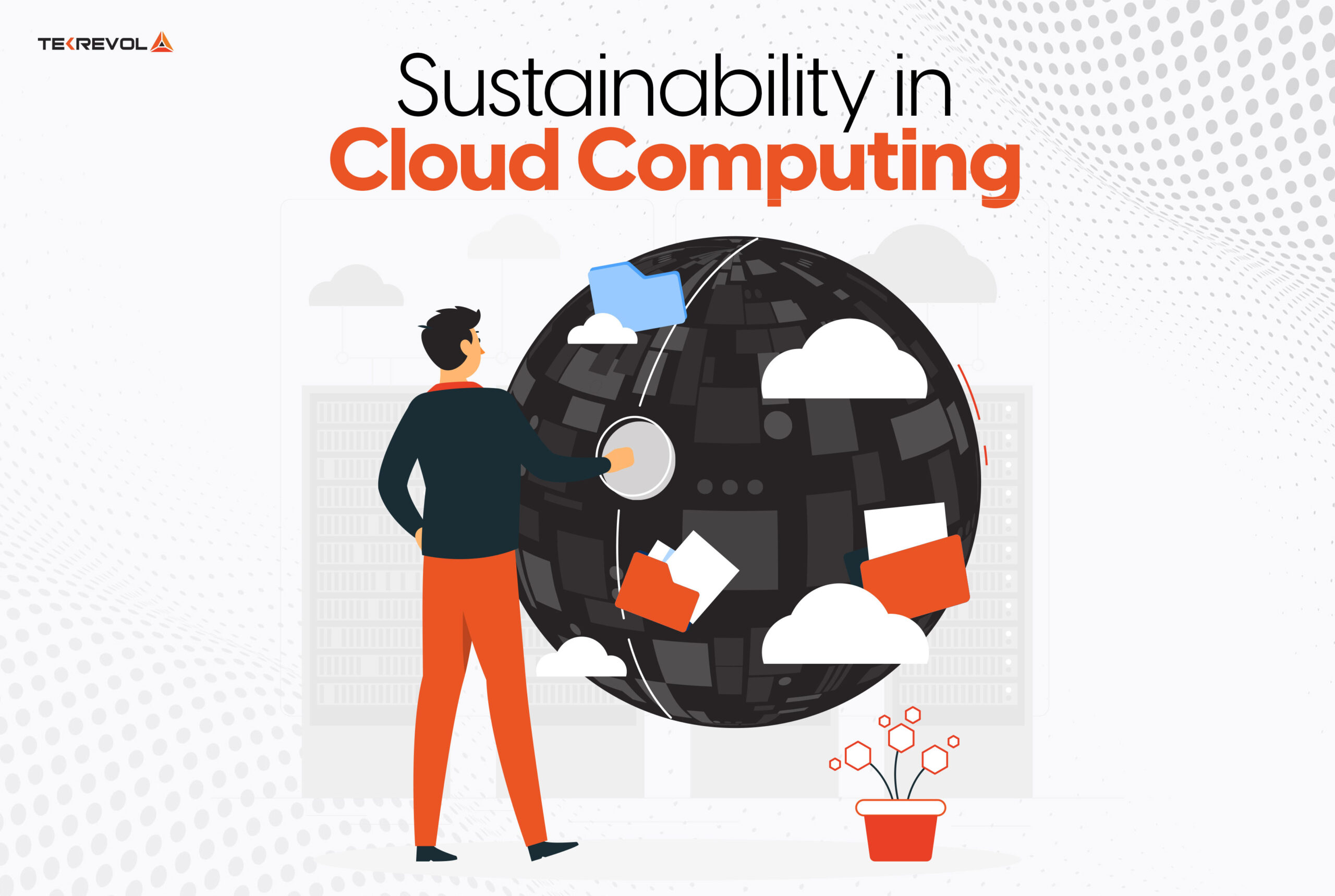
Sustainability is the latest theme for the tech world entering 2025.
Organizations are becoming much more conscious about the impact of their IT operations on the environment. Since around 1.8% to 3.9% of greenhouse gas emissions globally come from the ICT sector, businesses need to actively make an effort to reduce the carbon footprint.
Such practices in cloud service not only support the reduction of harmful environmental impacts but also boost brands and efficiency at work. As companies embrace such innovative cloud technology, they ensure optimal use of resources and depend on renewable energy.
For example, most providers promise to use a green data center, which would consume less power than any equivalent on-premises solution.
How Such Efforts will Benefit Businesses
Implementing green practices in cloud computing can increase the reputation of the brand as a corporate citizen for the environment. Further, efficient use of resources cuts down the cost of operations and allows companies to invest in innovation and growth.
Real-Life Developments
- Google: Achieved carbon neutrality in its global operations and aims to run on 24/7 carbon-free energy by 2030.
- Microsoft: Committed to being carbon-negative by 2030, focusing on sustainable data center operations and renewable energy usage.
- Amazon Web Services (AWS): Implements various initiatives to improve energy efficiency in data centers and aims to power its operations with 100% renewable energy by 2025.
How TekRevol Can Help You Leverage Emerging Cloud Technologies
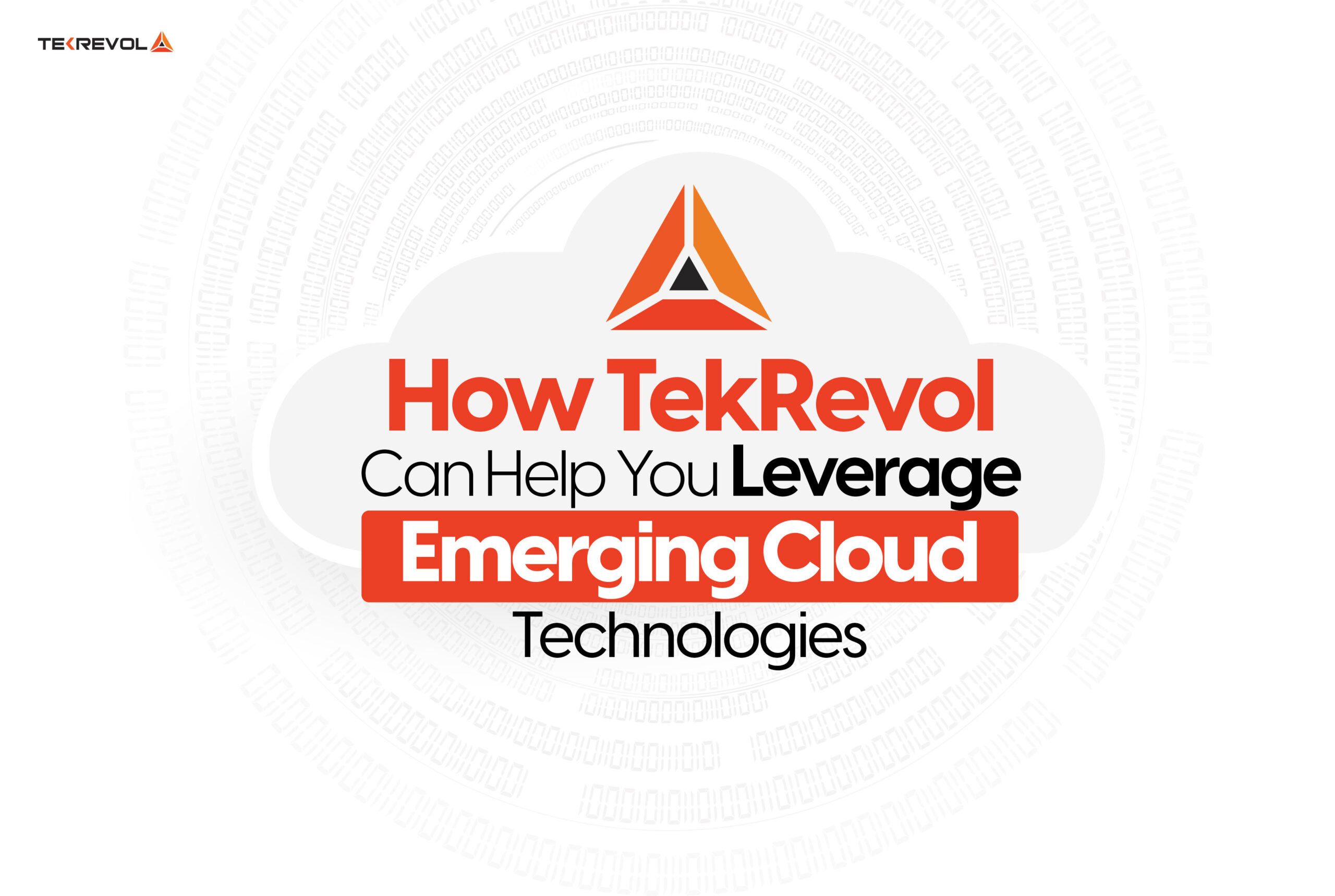
Emerging cloud technologies are increasingly becoming a norm among organizations. Partnering with the right entity can be crucial while dealing with complexities in cloud transformation.
This blog has brought into light the major trends like AI-driven solutions, serverless computing, and sustainability initiatives that significantly enhance operational efficiency and drive innovation.
Among key trends such as solutions driven by AI, serverless computing, and sustainability, the value addition in operational efficiencies and driving innovation will be noteworthy.
At TekRevol, we bring over 6 years of expertise in cloud consulting and development. Our team excels in providing tailored cloud consulting services that guide businesses through their cloud journey efficiently.
We have a proven track record of successful cloud migrations and optimizations across various industries. We focus on integrating innovative solutions that align with your business goals.
Our clients have reported up to a 40% reduction in IT operational costs and a 65% boost in developer productivity after implementing our strategies.
If you are a business leader looking to optimize the effectiveness of your operations or want consultancy to streamline more compelling cloud-based solutions, then TekRevol could be your perfect co-partner.
Whether you want to bring innovation to your services or upgrade your infrastructure, get in touch with us today and see how we can help you leverage the power of nascent cloud technologies toward sustainable growth.
- Ready to Future-Proof Your Business?
- Stay ahead of emerging cloud trends by adopting innovative technologies that drive growth and efficiency today!

 865 Views
865 Views January 15, 2025
January 15, 2025